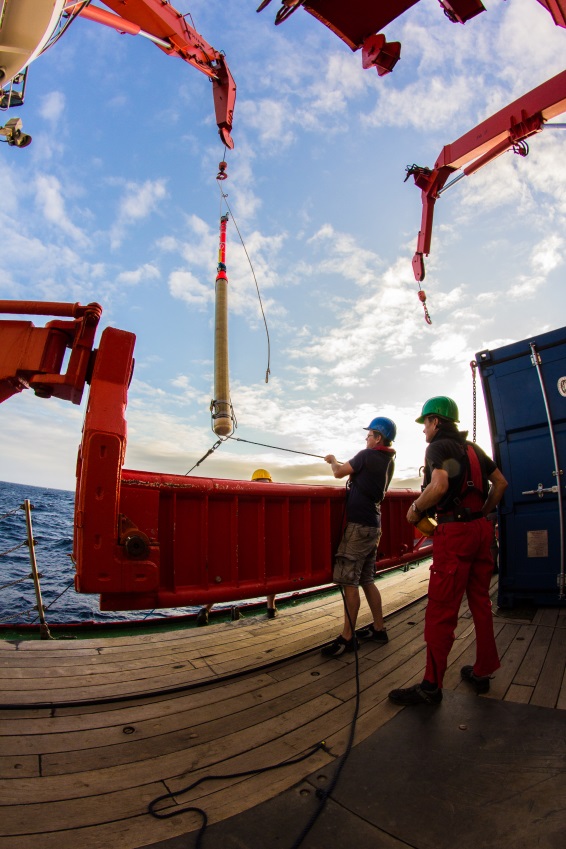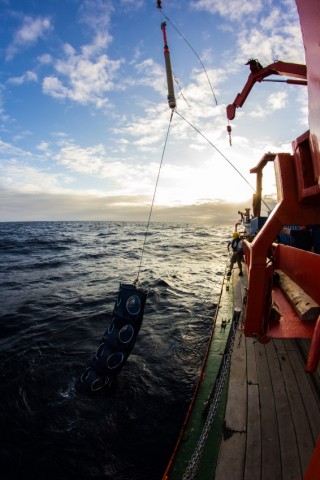After a spontaneous preparation phase, we were ready to deploy the surface drifter on the evening of July 28. Surface drifter? The drifter consists of three parts: a floating buoy (looking like an oversized spear used for fishing); a 6 m long rope connecting the buoy to a 5 m long sack; and, at its end, an instrument cage. The instrument cage was outfitted with sensors for temperature, salinity, oxygen, CO2partial pressure, chlorophyll-a, and nitrate. The whole drifter drifts with the near surface current (about 15 m) and we were able to conduct our surface measurements in one water parcel for 24 hours.
At 16:30 we were ready for deployment. All parts were connected; the sensors were programmed to start as soon they hit the water. The whole assembly was deployed with two cranes and once they were free we could only hope that we did everything correct and the whole drifter would float – and it did!!
Now we were ready to follow the drifter with the ship and during the night a small flasher helped the bridge to locate the drifter. Every 30 minutes the drifter sent its position via email and after the first emails the debates about the surface currents could be laid to rest: the drifter went with around 1 knot in the eastward direction.
This meant the beginning of a tight schedule for the scientists, with 3 hourly underway and 6 hourly CTD sampling, and everybody was happy when we finished our 26 hour station with the last CTD today after dinner. After some improvements from the ship’s crew, the drifter was caught more easily than during the first deployment and safely stored on deck. We are looking forward, in the next few days, to having a closer look into the drifter data and all the other data to see if we can find diurnal cycles.
by Tobias Steinhoff

